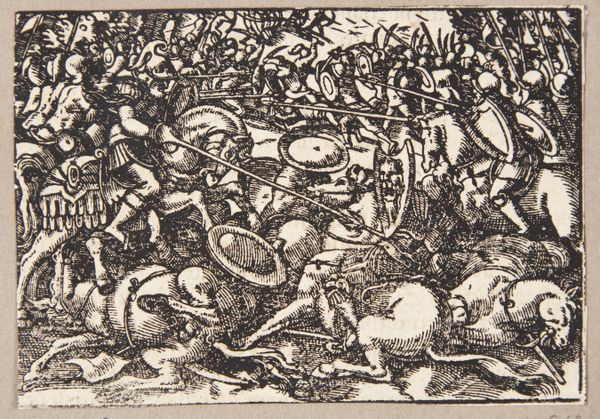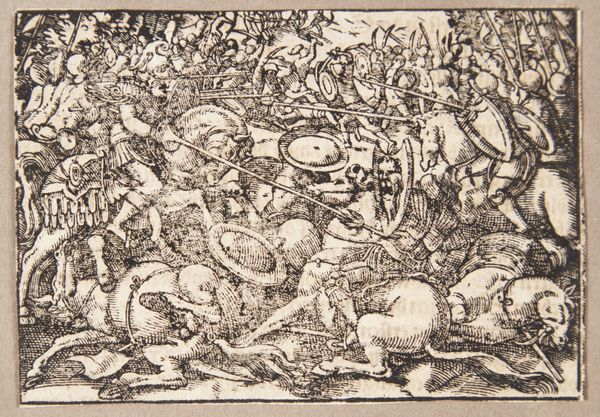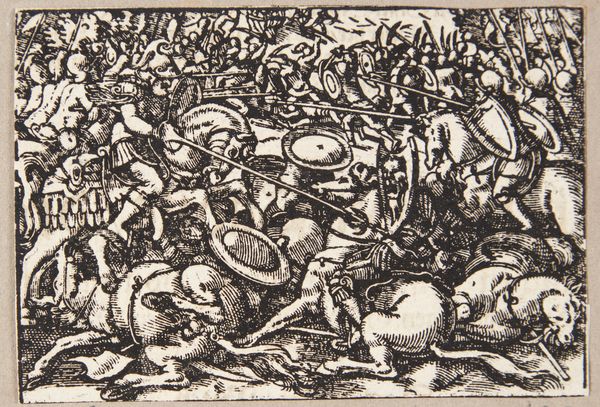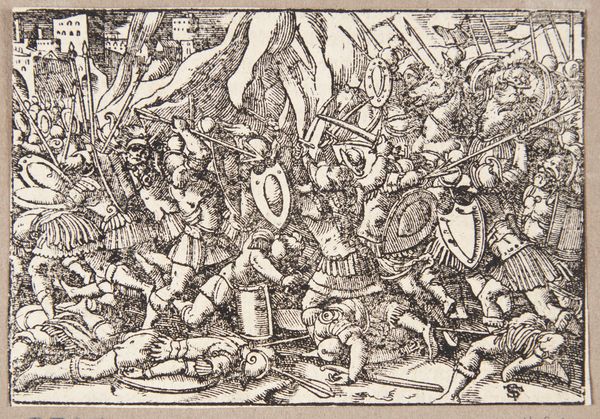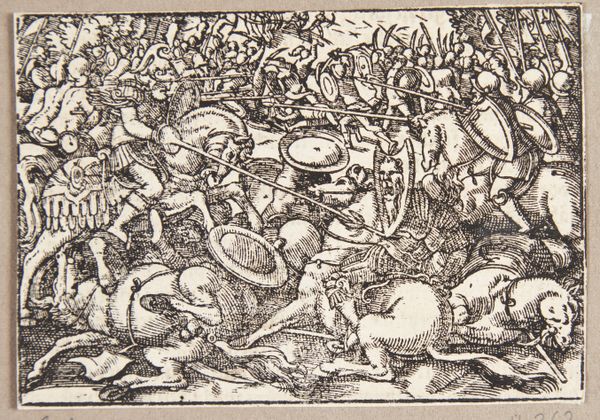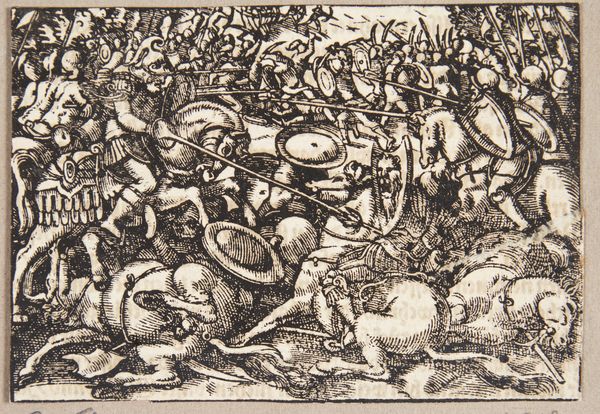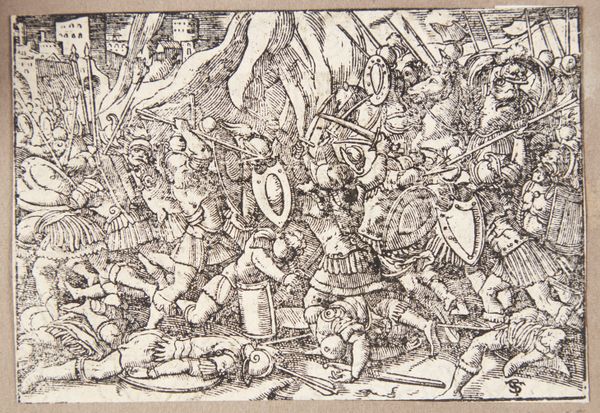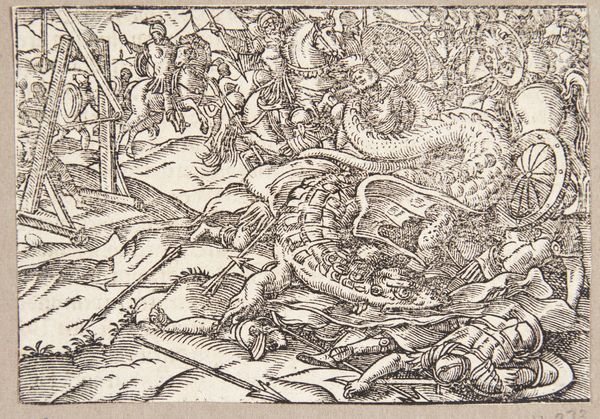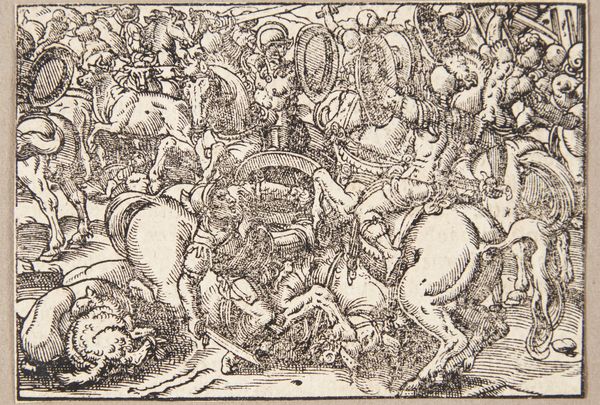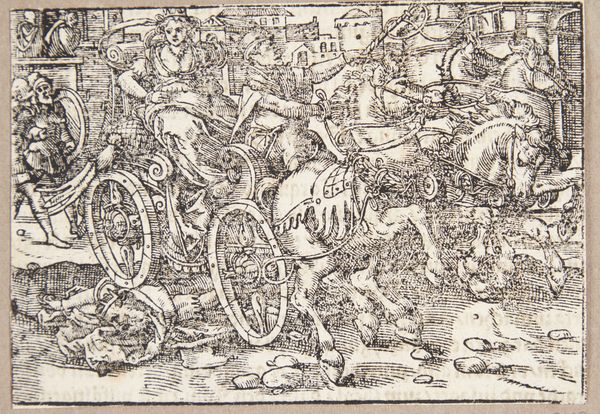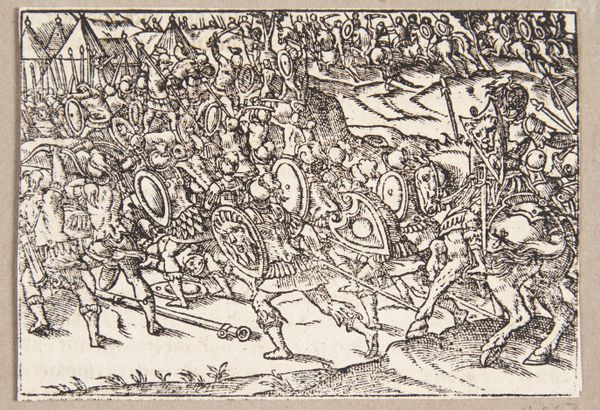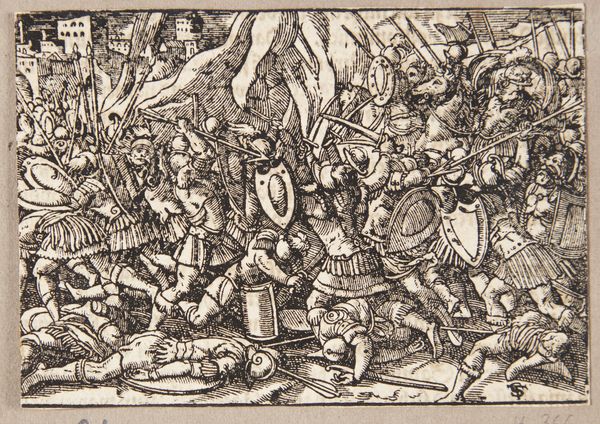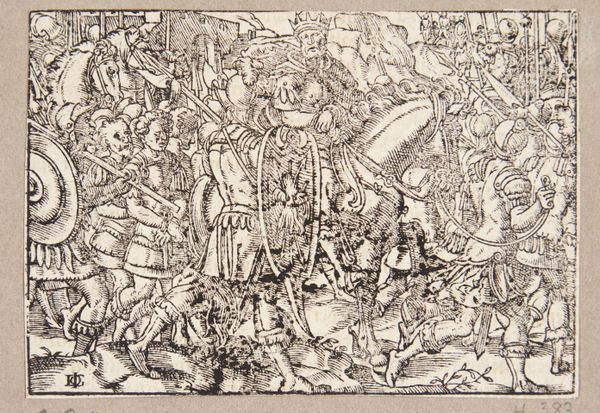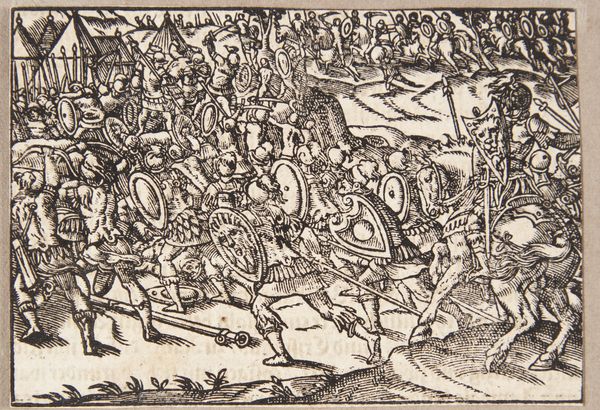
print, woodcut
#
ink drawing
#
pen drawing
# print
#
pen illustration
#
pen sketch
#
ink drawing experimentation
#
pen-ink sketch
#
woodcut
#
pen work
#
tattoo art
#
sketchbook art
#
doodle art
Dimensions: 75 mm (height) x 105 mm (width) (bladmaal)
Curator: This is "Romerne indtager Satricum," or "The Romans Take Satricum," created around 1574 by Tobias Stimmer. It's a woodcut, a type of printmaking, currently residing at the SMK, the National Gallery of Denmark. Editor: My immediate impression is chaos, but a beautifully rendered chaos. Look at all those tangled bodies, horses, and weaponry. It’s like a whirlwind captured in miniature. It almost feels like a tattoo design gone wild! Curator: It's a fascinating piece. Stimmer was working during a period of intense religious and political upheaval, and historical narratives like this served to both entertain and subtly comment on contemporary power struggles. This specific scene, the Roman conquest of Satricum, would have been familiar to viewers steeped in classical literature. Editor: Do you think viewers back then saw the same chaotic energy that I do? It strikes me how dense and frantic the composition is. Like a newsreel crammed onto a postage stamp! And there’s almost a grotesque energy to some of the faces and fallen beasts. It's not sanitized at all, is it? Curator: Not in the slightest. What Stimmer offers is an incredibly dynamic depiction of battle. This wasn't intended to glorify war; it was showing its brutality, its cost, the shear disarray of it all. The lines practically vibrate with the tension. Prints like these had a wide circulation, bringing these historical scenes to a broader audience and, importantly, contributing to a shared visual culture. Editor: Shared visual culture indeed! Look at how this battle, frozen in 16th century ink, mirrors debates about conflict playing out even today! The anxieties, the power dynamics. I never thought I'd see reflections of modern-day geopolitical theatre in a tiny, centuries-old woodcut. Curator: Well, that is why art continues to fascinate us. Works such as this encourage reflection on the human condition regardless of what era it comes from. Editor: Precisely. So many layers here, so many ideas bubbling beneath the surface of the ink. I could happily get lost in here for hours, chasing all these details and trying to make sense of all the narratives both of then, and now!
Comments
No comments
Be the first to comment and join the conversation on the ultimate creative platform.
